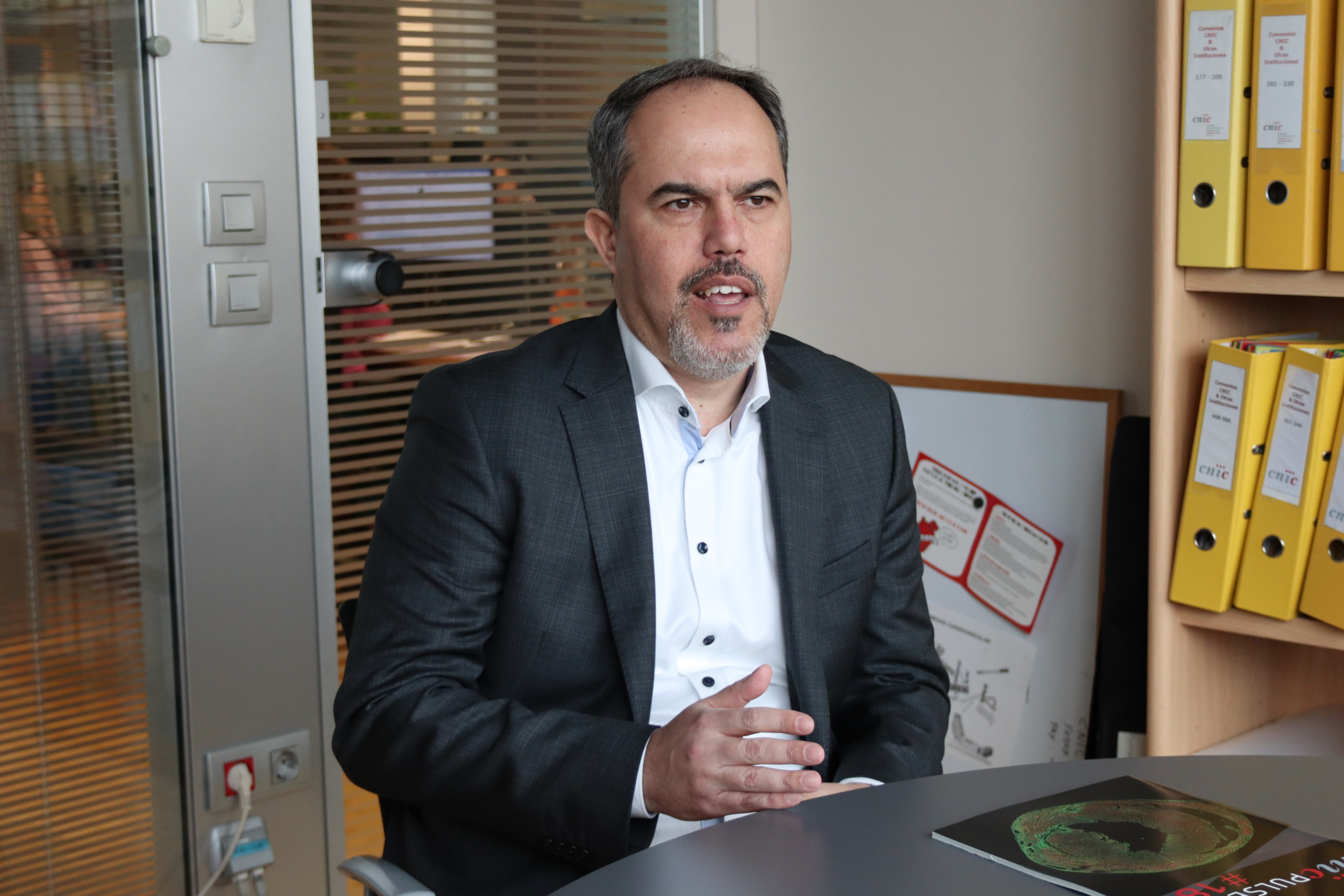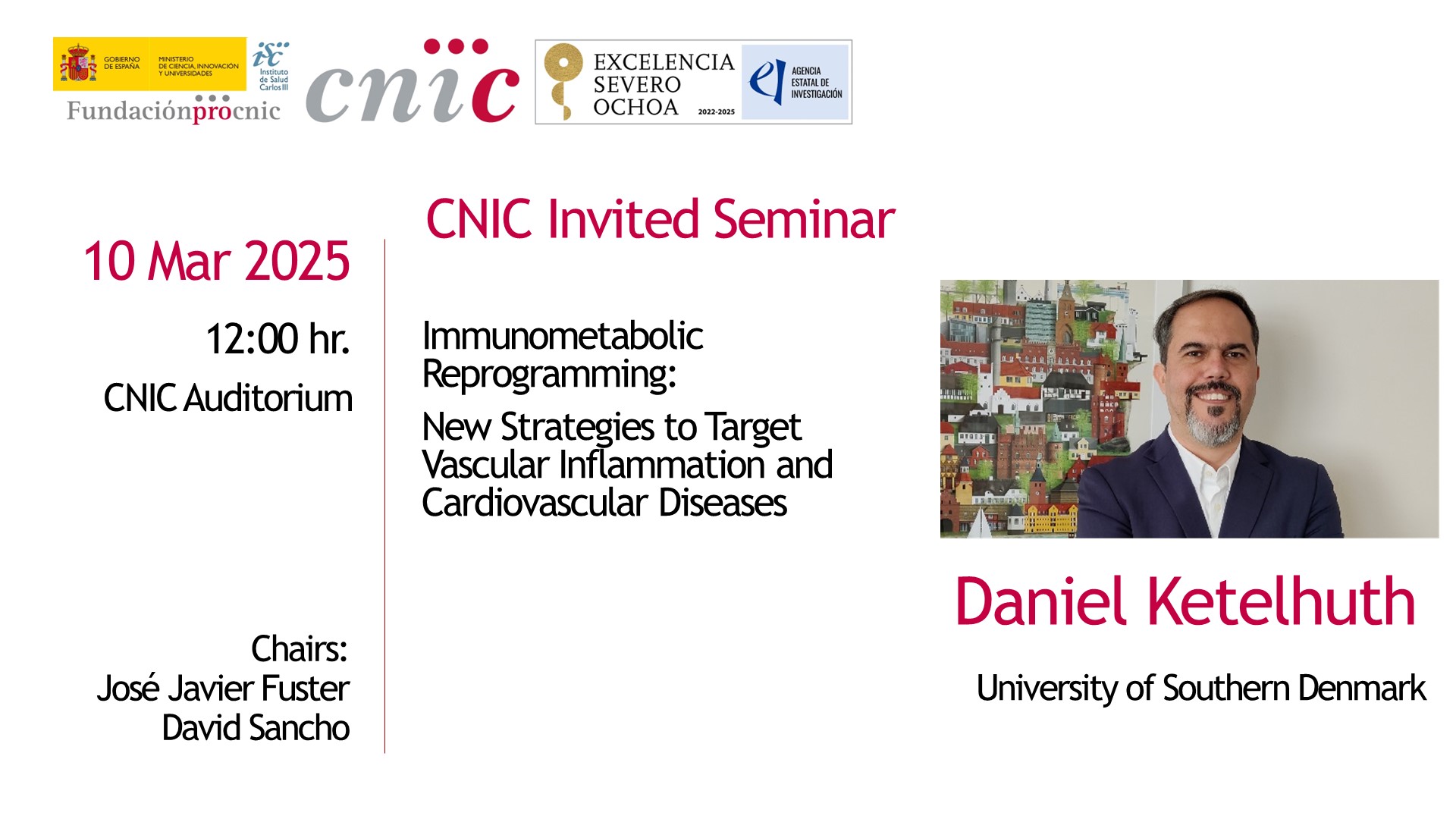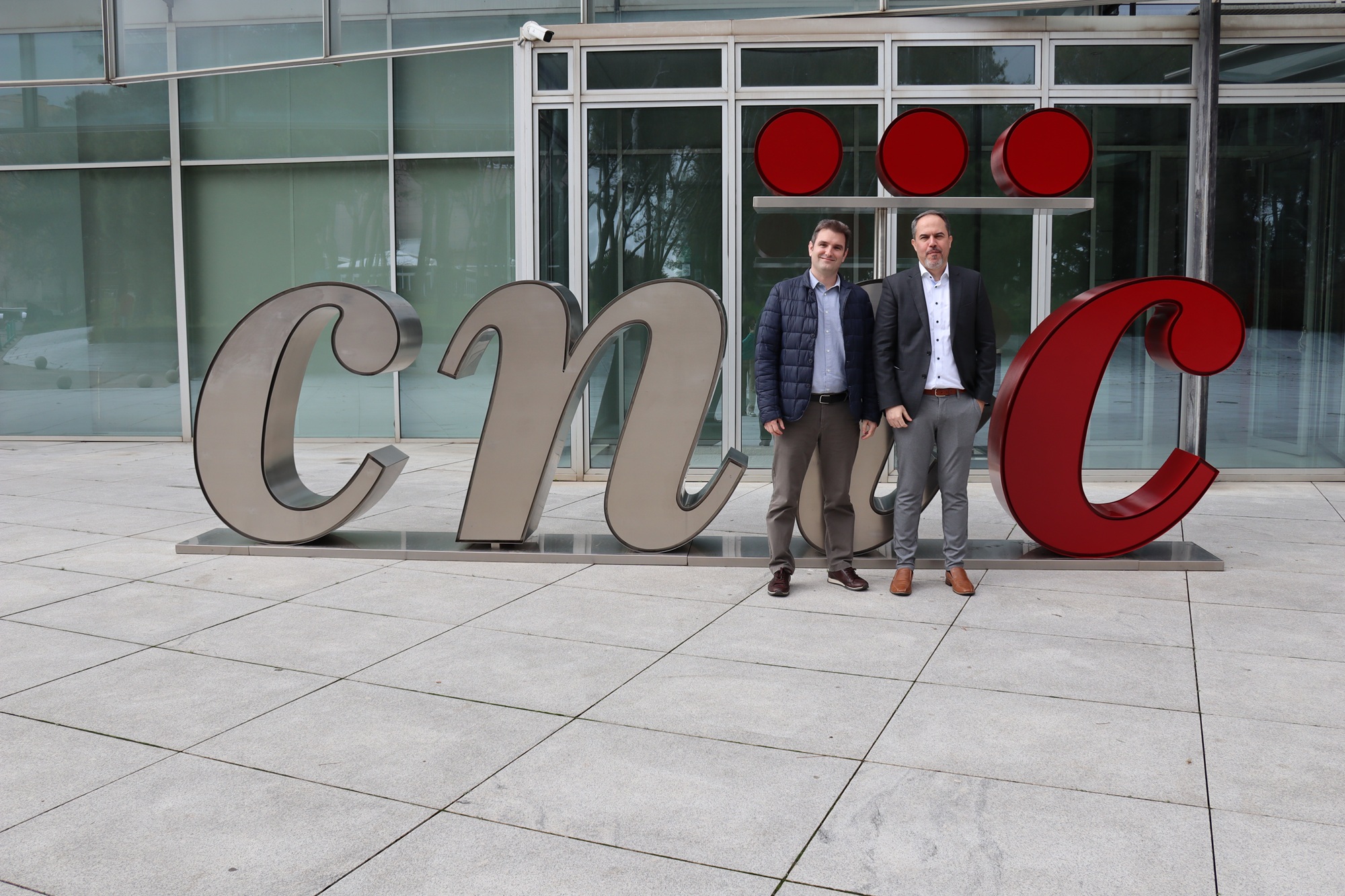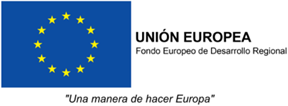Daniel Ketelhuth: "We joke sometimes that “research” just means you need to search again—and again, and again"
Prof. Daniel Ketelhuth leads a research team at the University of Southern Denmark
Prof. Daniel Ketelhuth is a leading researcher in cardiovascular disease (CVD). A pioneer in the field of immunometabolism, his research has shown that the dysregulation of tryptophan metabolism via the kynurenine pathway and other metabolic alterations in immune cells play a significant role in modulating vascular inflammation. Prof. Ketelhuth currently leads a research team at the University of Southern Denmark, dedicated to advancing our understanding of how various metabolic targets can influence CVDs, particularly atherosclerosis and abdominal aortic aneurysms (AAA). Over the past two decades, he has published nearly 90 articles and mentored more than 30 students and fellows.
- Your studies suggest the immune system plays a role in heart disease. Can you explain how?
My research focuses on CVDs—primarily atherosclerotic cardiovascular disease, but we’re also studying abdominal aneurysms, which can be related to atherosclerosis. Broadly speaking, we’re interested in vascular inflammation, or inflammation in the vessel wall, and how we can modulate this process.
CVDs are characterized by extensive vascular inflammation, a pivotal driver in their pathogenesis. In these conditions, the immune system plays a critical role, with immune cells infiltrating the vessel, releasing inflammatory cytokines, and contributing to tissue remodeling and damage. Interestingly, these immune responses are intricately linked to intracellular metabolic changes within the immune and vascular cells themselves.
For example, when immune cells become activated, they undergo metabolic reprogramming, switching from a resting state that relies primarily on mitochondrial metabolism to a more glycolytically active state that supports rapid proliferation and effector functions. If not properly controlled, this shift fuels the local inflammatory response and exacerbates the disease process.
Another interesting aspect of the metabolic skewing during inflammation is that various intermediate metabolites, on different pathways, are not just substrates for energy or biosynthesis but also can interact with proteins and also act as signaling molecules. Some of these metabolites can also interact directly with DNA or with specific receptors, providing an additional layer of regulation over cell function in the context of inflammation.
- How could your research on metabolism lead to new treatments for cardiovascular disease?
Alongside many others, including David Sancho at CNIC, we’re studying what's known as immunometabolism, the metabolism of immune cells—and how this metabolism can actually dictate whether a cell becomes inflammatory or not. Therefore, if we take a deeper look, we’re particularly interested in pinpointing the main intracellular metabolic pathways involved in deleterious and protective processes in the artery wall.
For example, we can inhibit enzymes or knock out their encoding genes in specific cells or whole animals and then evaluate how these modifications impact cellular functions and disease processes. What’s particularly interesting about immunometabolism is that the metabolic reprogramming we see in immune cells is, in many ways, similar to what happens in cancer cells. This opens up a really exciting possibility: drugs originally developed to target cancer cell metabolism might also be repurposed to treat cardiovascular diseases.
In our lab, we’ve been exploring this idea in some projects. We’ve recently assessed a compound that was originally developed for a rare genetic disease characterized by an enzymatic imbalance leading to severe lactate acidosis. This enzymatic imbalance is also found in various cancers, driving the drug to also be considered for trials for both solid tumors and blood malignancies. Our results, which were recently published, showed that the drug could actually protect mice from developing atherosclerosis. And in a separate model of abdominal aneurysm, it also provided protection. So, this opens a new path where we might use metabolic therapies—not just in cancer—but also in cardiovascular and inflammatory diseases.
By modulating metabolism in immune and also vascular cells, we can influence how these cells behave in the vascular wall, which could help reduce inflammation and prevent or treat atherosclerosis and aneurysms.
- Are there some lifestyle or dietary changes that could support better heart health based on your findings?
Yes, that’s a really important point—what we’re seeing now is an epidemic of metabolic dysregulation worldwide. Conditions like obesity and diabetes are massively increasing, and they’re not just metabolic issues, they directly affect the immune system. That’s why immunometabolism is so relevant. It helps explain how these metabolic diseases are tied to cardiovascular conditions like atherosclerosis and aneurysms.
Of course, there’s strong evidence that improving lifestyle—like diet, exercise, sleep—has a positive effect on the immune system and reduces disease risk. Unfortunately, we know it’s hard to get people to change their behavior long-term. So, part of our research is about finding drugs that can replicate some of those benefits, even if lifestyle changes aren’t fully happening.
But that raises another challenge: if we have a drug for everything, will people stop caring about their health altogether? It’s a bit of a philosophical and societal dilemma.
And then you have these new drugs like Ozempic or other GLP-1 receptor agonists. Obesity and type 2 diabetes are already huge risk factors for cardiovascular disease, and these drugs seem to hit several birds with one stone. There’s a recent meta-analysis showing that these drugs can reduce blood pressure, which, of course, relates to weight loss induced by these drugs. Interesting, though, is the possibility that the benefits of weight loss might also impact immunometabolism, potentially playing a significant role in protecting against atherosclerosis.
But the question is, do people have to stay on these drugs for life? We still don’t fully know the long-term side effects. I hope they won’t turn out to be harmful, because so far, the clinical benefits are very strong—not just in terms of weight loss but also in reducing cardiovascular risk, which could have a massive public health impact.
Going back to what I just said, mechanistically, we still don’t completely understand how these new drugs work. It’s probably not just through glucose regulation. That’s something the field needs to keep investigating. For us, right now, we’re not directly researching Ozempic or GLP-1s, but we’re definitely watching the space closely.
- How has technology changed the way you do research—from when you started until now?
It has changed tremendously. When I first moved to Stockholm, it was the era of GWAS—genome-wide association studies. Everything was about identifying SNPs and mutations and understanding how they might relate to disease.
But today, the field has taken a huge leap forward. We now have single-cell sequencing, which allows us to analyze gene expression at the level of individual cells. We’re also starting to see epigenetic profiling at the single-cell level, and there are even discussions about doing single-cell metabolomics—which would have been unthinkable not that long ago.
Another game-changer is spatial transcriptomics. This technology brings in a whole new dimension by mapping gene expression directly in tissue sections, allowing you to see not just what genes are expressed, but where in the tissue this is happening. That spatial context is crucial, especially in complex tissues like the vascular wall.
- What excites you most about the future of heart disease research?
I’m excited about the intersection of big data, single-cell analysis, and spatial transcriptomics. These tools reveal previously hidden layers of disease mechanisms. Also, understanding how metabolic dysfunction contributes to inflammation in the context of both cardiovascular disease and also aging, which could unlock preventive strategies that change the course of disease decades in advance.
- What breakthroughs do you foresee in cardiovascular research in the coming years?
A deeper understanding of how lifestyle and metabolic imprinting affect long-term inflammation and disease risk. There’s growing evidence that early-life exposures — even in utero — can program immune cells toward disease-prone states. Identifying and potentially reversing these imprints will be revolutionary.
- Will the immune system be the central key?
Absolutely. The immune system is the common thread across many cardiovascular diseases, autoimmune, cancer, and infections. A dysfunctional immune system underlies much of the pathology in the natural process of aging. If we can understand and modulate immune system aging, the benefits could be enormous.
- How do you find mentoring students?
My group is relatively small. I currently supervise four PhD students and one postdoc. We also work closely with four associated technicians. In addition, I always have master’s students and short-term trainees who stay with us from a few months to one year. So, in total, the group tends to be around 10 to 12 people.
Mentorship is definitely one of the most important—and challenging—parts of being a PI. It’s really an art in itself. In fact, at Karolinska, and I believe also in Denmark, we’re required to complete training in pedagogy to become “official” supervisors. In Sweden, it should be at least five weeks of formal training. I’ve completed that, and it definitely helps, but of course most of what you learn is on the job, and case by case.
I’ve been mentoring students for just over 10 years now, and I’d say I’m much better at it today than I was when I started. Nevertheless, a lot of how I run my group is influenced by what I learned from my own mentors, both the things I admired and the things I felt should be done differently. One of my main mentors was actually involved in the advisory board for CNIC early on, and I learned a great deal from working with him.
For me, one of the most important aspects of mentoring is just being available. We meet religiously once a week—Tuesdays at 8:30—for a one-hour group meeting where everyone brings raw data, shares challenges, and discusses experiments. It’s also a space to plan large experiments that need team coordination. Those meetings are key for building team spirit and momentum.
Motivation is another huge part of my role. Research is tough—maybe 10% success, 90% failure.
- Someone once told me, “failure is just a way to improve your research.”
We joke sometimes that “research” just means you need to search again—and again, and again. It’s about persistence and learning from what doesn’t work. I also try to help my students gain confidence in what they present and ensure their conclusions are solid.
- Do you give your students career advice or broader guidance?
Yes, we talk about that a lot. I try to share not just scientific knowledge, but also what I’ve learned about navigating a career in science. I make it very clear what a privilege it is to work in academia. It’s a life of constant learning. Every day brings something new, and we’re often standing right on the edge of the next major shift.
Right now, I think we’re living through one of those shifts. The pace of technological advancement—especially with omics—is producing an explosion of data, but we’re still learning how to navigate and make sense of it. It’s overwhelming at times but incredibly exciting to be part of shaping what comes next.
In terms of clinical impact, the future lies in precision medicine. We already have effective general treatments—statins, antihypertensives, aspirin—but they’ve likely reached their limit in terms of population benefit. Now we need to understand why some people don’t respond, and tailor treatments accordingly.
For example, in our work, we’re asking whether metabolic dysregulation at the cellular level, particularly in immune cells—might be a key to this. Does the expression of certain metabolic enzymes relate to whether cells are inflamed or not? Could this link to somatic mutations, which are studied by José Javier Fuster here at CNIC, or to accelerated immune aging? Diseases like type 2 diabetes and cardiovascular disease are strongly tied to aging, and we suspect that these metabolic changes may be pushing parts of the immune system into an “aged” inflammatory state earlier than normal.
That’s the kind of deeper understanding we need to really shift how we treat disease—and being part of that journey is what makes research so rewarding.
- Although you have been living in Scandinavia for the past 20 years, you originally come from Brazil. Have you ever thought about returning?
Of course, it’s always in the back of my mind. I’ve been away for some time and feel very settled in Europe. But I love collaborating with Brazilian researchers and never say never. The scientific environment in Brazil is more challenging, but that also breeds creativity and resilience. I owe a lot to my education in Brazil, particularly at the University of São Paulo, which provided a solid foundation in scientific exploration and opened the doors to international research opportunities that have shaped my career.












